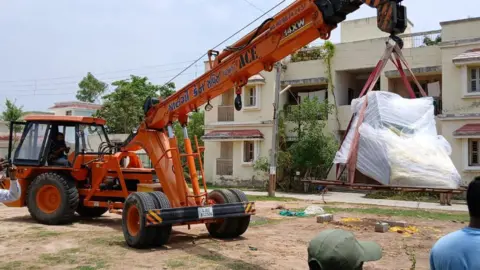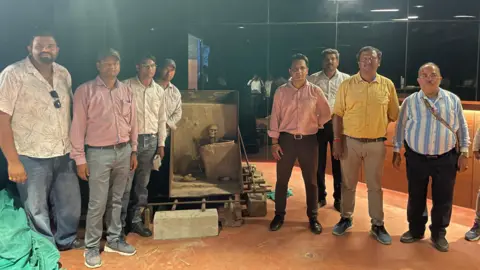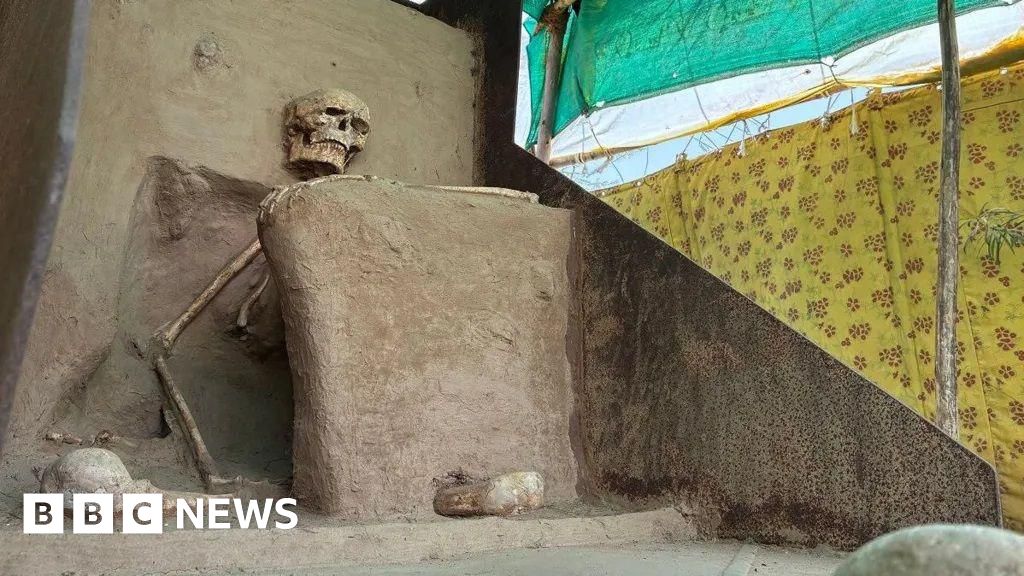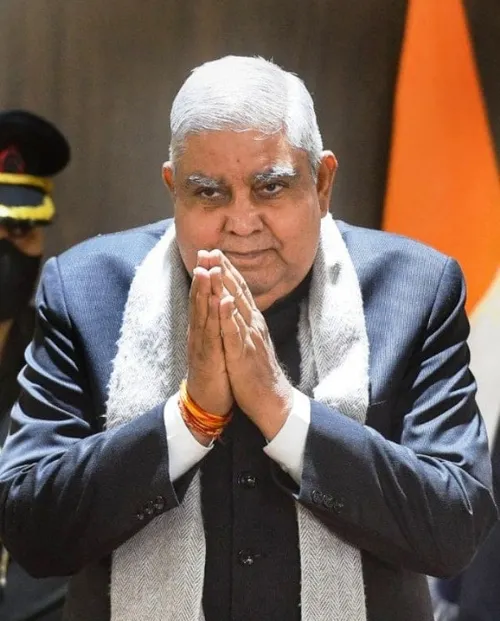BBC Gujarati, Vadnagar
 Kushal Batunge/BBC
Kushal Batunge/BBCA 1,000 year-old human skeleton which was buried sitting cross-legged in India has been moved to a museum six years after it was excavated.
The BBC had reported earlier this month that the skeleton had been left inside an unprotected tarpaulin shelter close to the excavation site in western Gujarat state since 2019 because of bureaucratic wrangling.
On Thursday, the skeleton was shifted to a local museum, just a few miles away from where it was unearthed.
Authorities say that it will be placed on display for the public after administrative procedures are completed.

Mahendra Surela, curator of the Archaeological Experiential Museum in Vadnagar where the skeleton has now been shifted, told the BBC that the skeleton was transported with “utmost care” and under the supervision of several experts.
He added that officials of the Archaeological Survey of India (ASI) – the agency responsible for preservation of archaeological research – will examine the skeleton before taking a decision on where and how the skeleton should be displayed in the museum.
It is currently placed next to the reception and is fenced in by a protective barrier.
“It is likely that we may shift it to the second floor, where a photograph of the skeleton is already placed,” Mr Surela said.
Archaeologist Abhijit Ambekar, who discovered the skeleton, said that he was happy that the significant find was getting the attention it deserved.
Ambekar had earlier told the BBC that the skeleton was a rare discovery as similar remains had been found at only three other sites in India.
 Roxy Gagdekar Chhara/BBC
Roxy Gagdekar Chhara/BBCBut as officials argued over who should take charge of the skeleton, it remained in a make-shift tent close to the excavation site, unprotected by security guards and exposed to natural elements.
Experts say that the skeleton likely belongs to the Solanki period. The Solanki dynasty, also known as the Chaulukya dynasty, ruled over parts of modern-day Gujarat between 940 to 1300 CE.
The skeleton had managed to survive the passage of time because the soil around it had remained undisturbed and displayed characteristics that aided preservation.
Mr Ambekar said that the remains could shed light on the phenomenon of “samadhi burials” – an ancient burial practice among Hindus where revered figures were buried rather than cremated.
Anurag Dhole is a seasoned journalist and content writer with a passion for delivering timely, accurate, and engaging stories. With over 8 years of experience in digital media, she covers a wide range of topics—from breaking news and politics to business insights and cultural trends. Jane's writing style blends clarity with depth, aiming to inform and inspire readers in a fast-paced media landscape. When she’s not chasing stories, she’s likely reading investigative features or exploring local cafés for her next writing spot.







